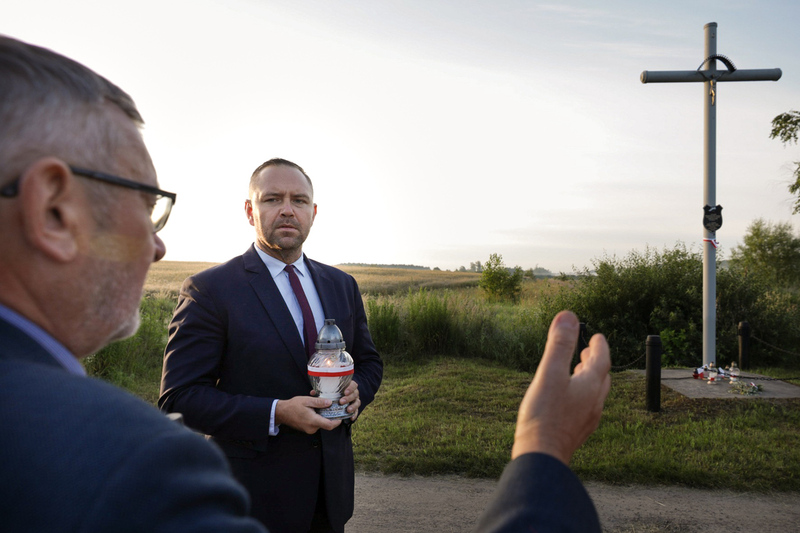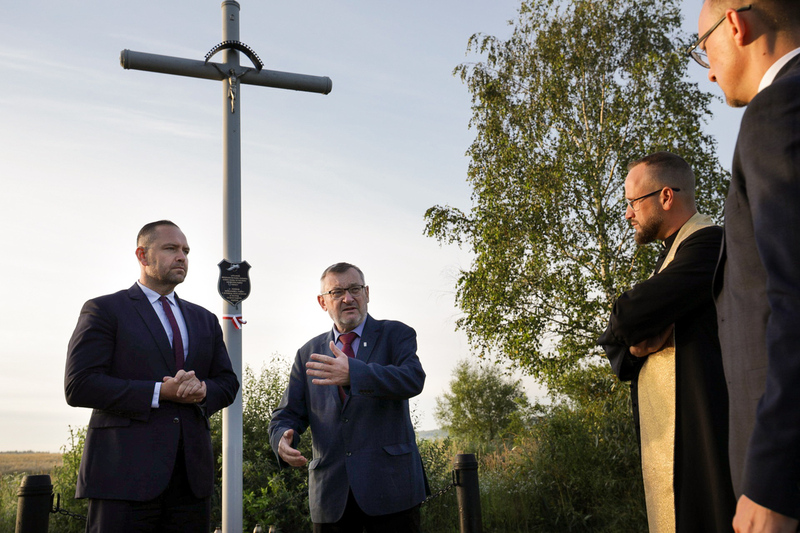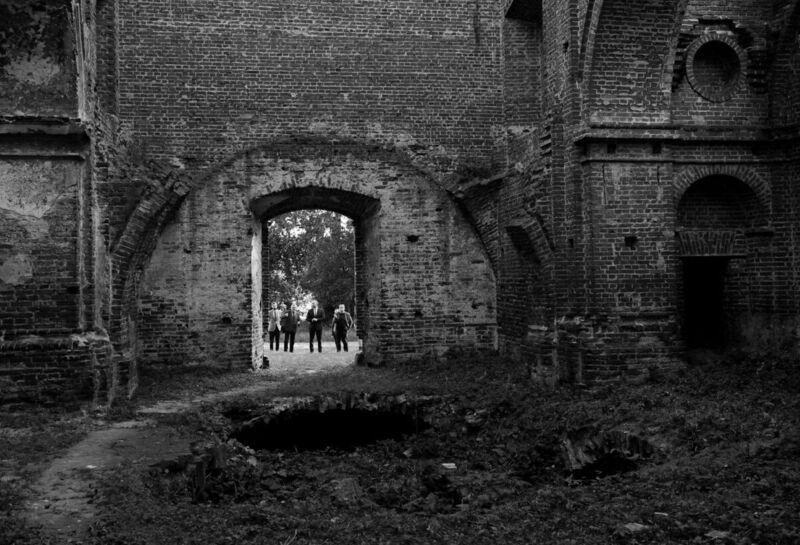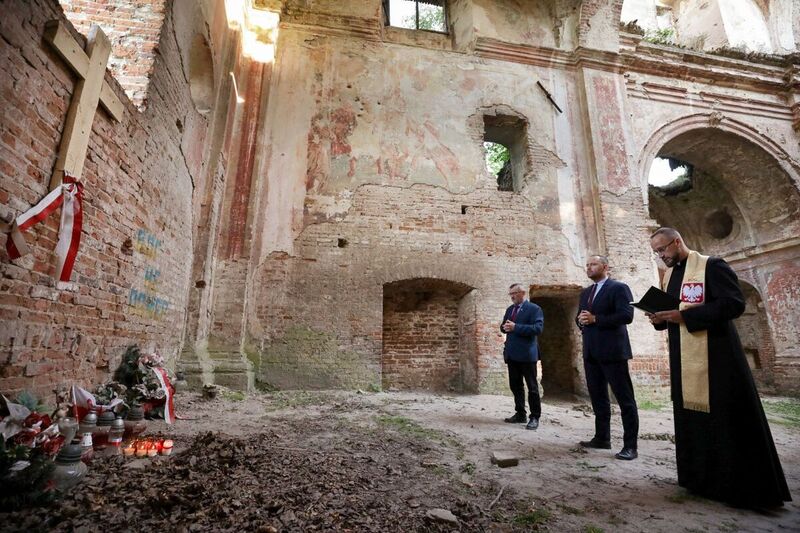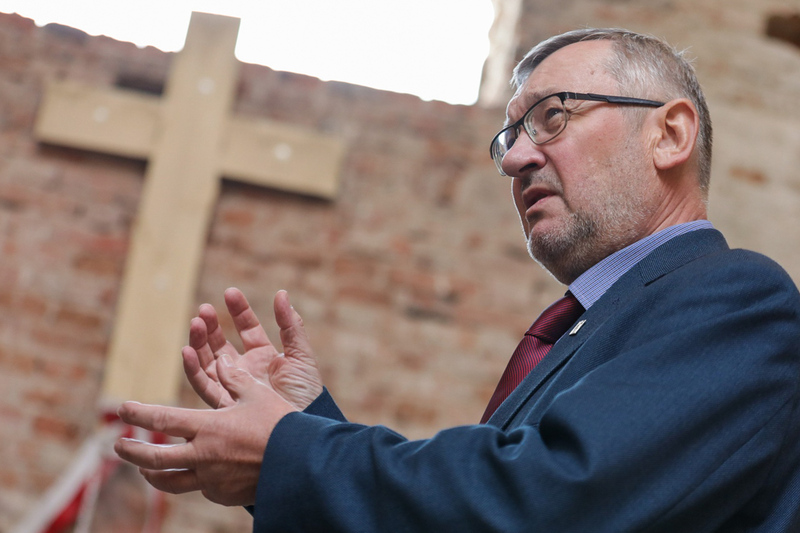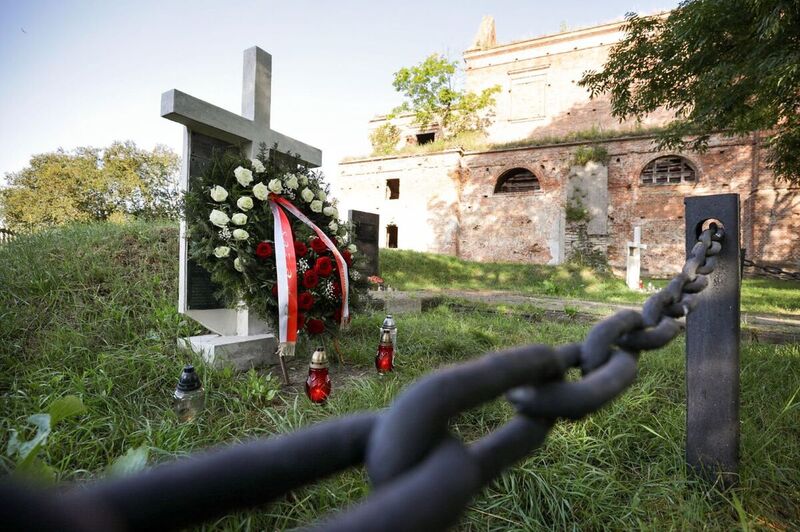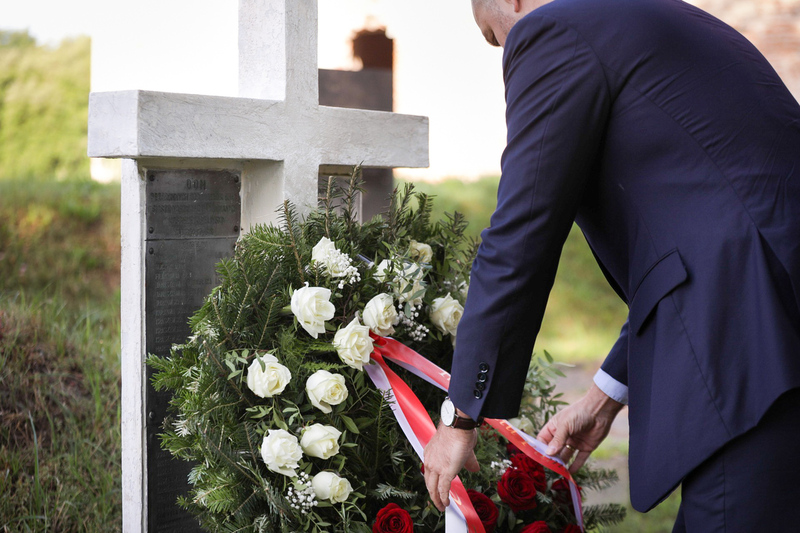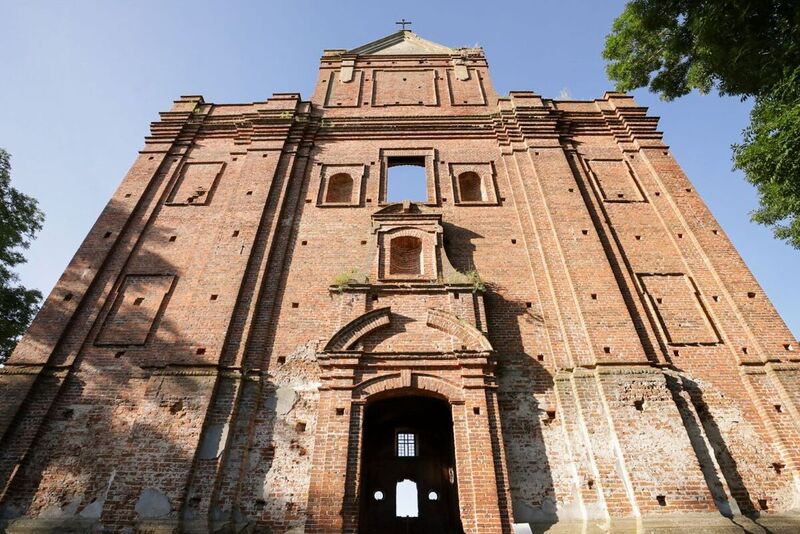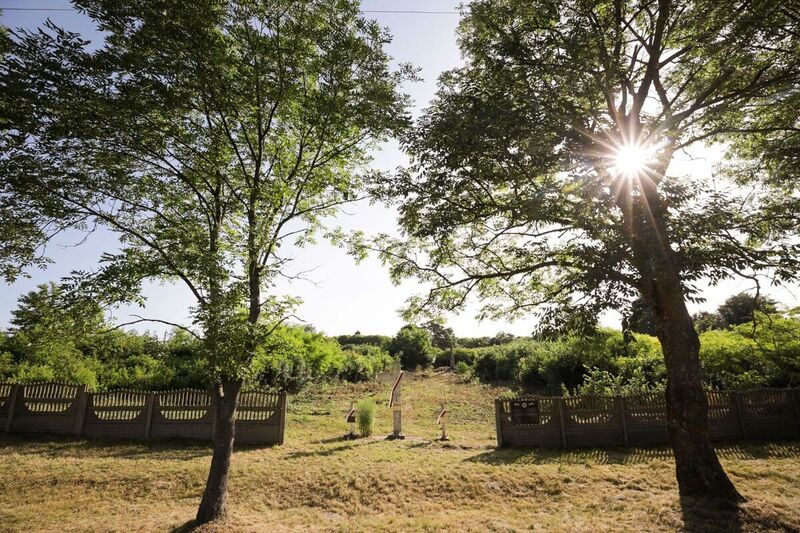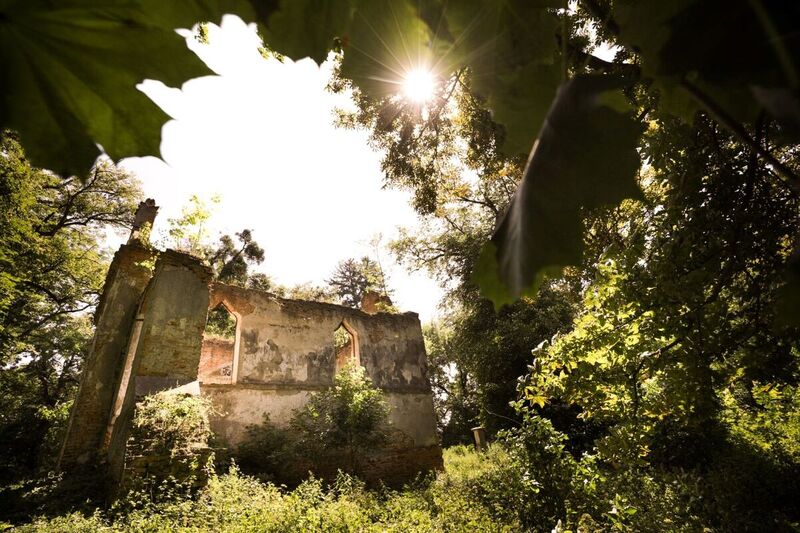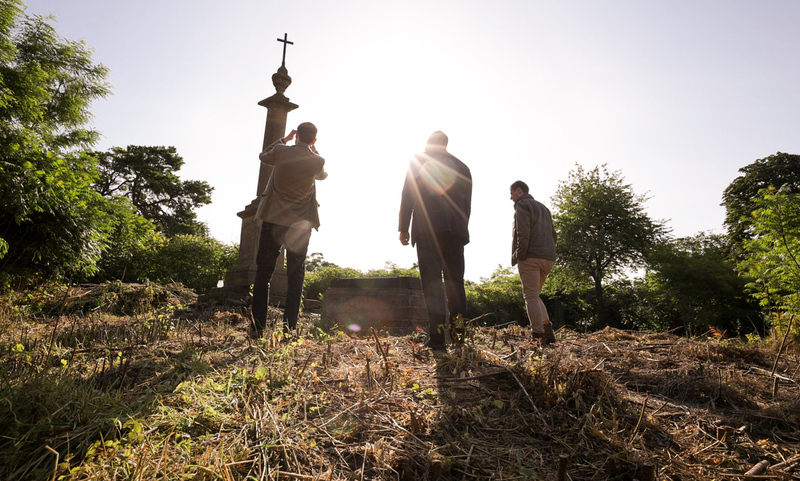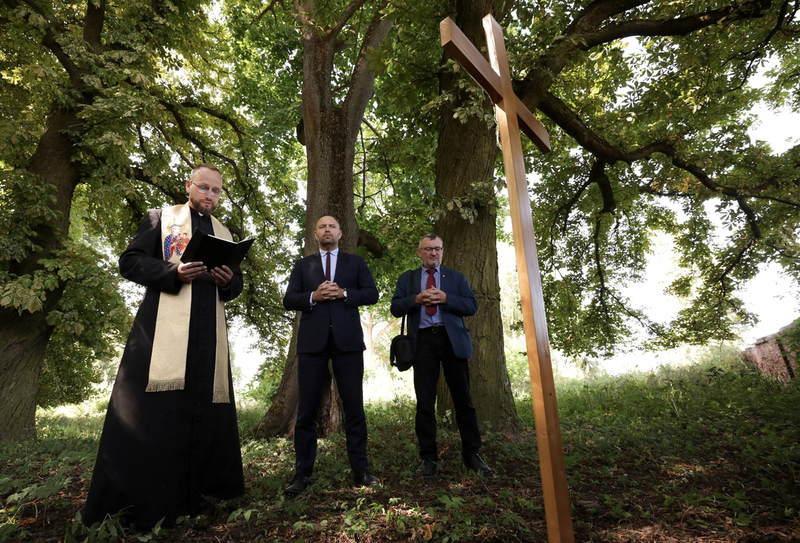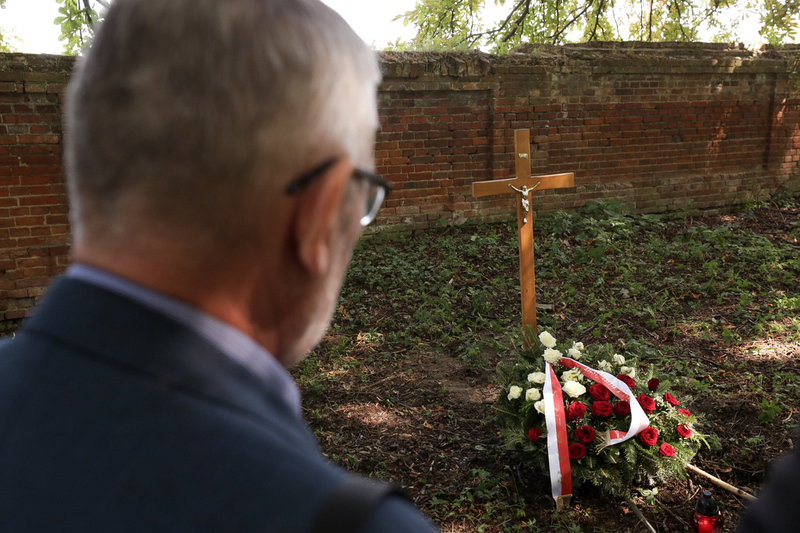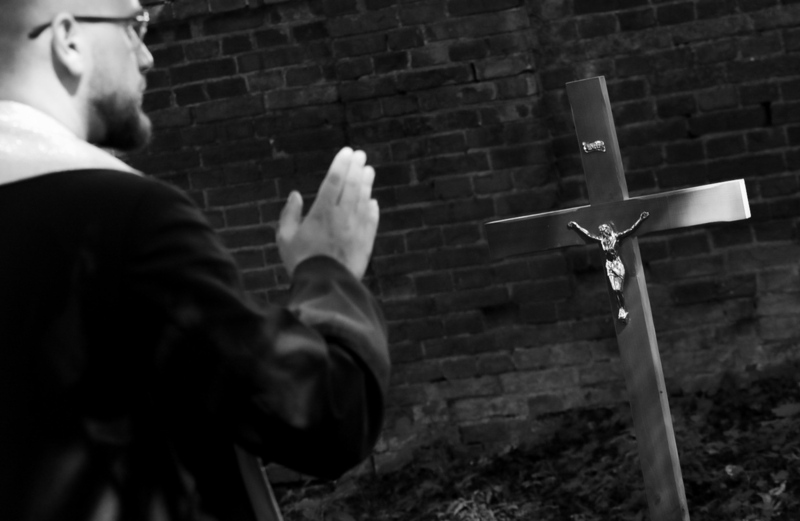In tribute to the victims of the genocidal action of the Ukrainian nationalists of the OUN-UPA, on 8 July 2023, the President of the Institute of National Remembrance Karol Nawrocki Ph.D., and his accompanying delegation commemorated the Poles murdered as part of the Volhynia Massacre which took place 80 years ago.
The President was accompanied by, among others, Leon Popek Ph.D., the Deputy Director of the Office of Commemorating the Struggle and Martyrdom.
During their stay in Volhynia, the delegation visited Kysylyn and Olyka. They also lit candles under a cross at a site commemorating Polish victims from the villages of Rudnia and Żurawiec, which do not exist today.
Kysylyn is a small village in the Volhynia Oblast, inhabited before World War II by Poles. It is also here that the Catholic church of the Immaculate Conception of the Blessed Virgin Mary was once located. On "Bloody Sunday", 11 July 1943, Ukrainian nationalists of the Ukrainian Insurgent Army murdered those assembled for a service. A total of 83 people were killed that day. The ruins of the then-destroyed church, as well as a symbolic memorial, have been preserved to this day.
IPN President Karol Nawrocki, paid homage to those who had lost their lives by laying a wreath at the monument commemorating the victims. He symbolically placed a cross in the ruins of the church and lit candles. Father Tomasz Trzaska of the IPN's Office of Search and Identification then said a prayer for the victims.
Olyka, east of Lutsk, was where a large Polish self-defense post against the Ukrainian Insurgent Army's actions was located. In the period from spring 1943 to spring 1944, nearly 500 innocent people were killed during the fighting. They were buried in mass graves under the cemetery wall. To this day their remains await exhumation and proper commemoration.
A cross was erected at the site of the most likely location of the mass graves. President Nawrocki laid a wreath and lit candles there. A prayer was said for the souls of the dead.
While visiting other execution sites of Poles in Volhynia, President Karol Nawrocki said:
Today I am here in Volhynia to admonish, on behalf of the Institute of National Remembrance, for due respect and a dignified burial for the murdered Poles. In places where 80 years ago there were Polish villages, today there are fields and trees. It is here that my brutally murdered compatriots have been buried.
With this symbolic gesture, during this very special time,we want to emphasize once again that this memory cries out for a Christian burial for the murdered Poles, for a dignified resting place for the Polish victims on what is today Ukrainian land. Ukraine is the country with which we have been uniting as a nation, both in terms of deeds and prayers, for the past two years in the face of Russian aggression. This is our common Christian duty and a duty to historical truth. Unfortunately, as of 2020, the Institute of National Remembrance has been waiting for permission from the Ukrainian authorities to carry out our activities.
I believe that Ukrainians will understand that history is an extremely important component of our, Polish identity, which is why we insist with such determination on obtaining permission for exhumation works and dignified commemoration of the victims of the genocide in Volhynia," the IPN President stressed.
11 July marks the National Day of Remembrance of the victims of the Genocide of the Citizens of the Polish Republic committed by Ukrainian Nationalists
Kysylyn - a village in the Volhynia region of Ukraine. During World War II, it was the site of several mass atrocities. On 11 July 1943, 83 people were killed during a mass in the church as a result of an attack by the Ukrainian Insurgent Army.
Olyka - a village in the Volhynia region, where Poles fleeing attacks by the Ukrainian Insurgent Army tried to find shelter. About 87 Poles were killed in the fighting at the hands of Ukrainian nationalists.
Rudnia - a village in the Kysylyn municipality that was burned to the ground. During the UPA attack on 12 July 1943, more than 140 villagers were brutally murdered. There were 30 survivors.
Żurawiec - a village in the Kysylin municipality. In July 1943, 10 Poles lost their lives here.
